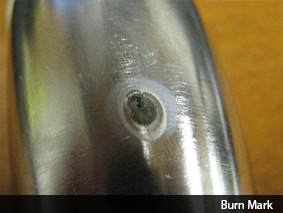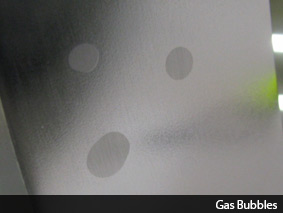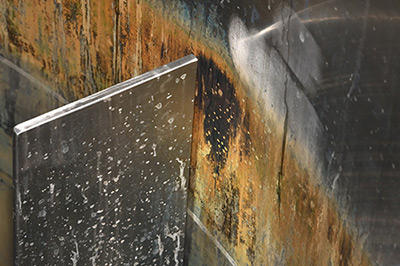
Your pressure rated vessel needs to be repaired to the required standards to ensure safe operation. But, how can you be sure your vessel meets those standards when the repair is complete? Ensuring an ASME Code Weld repair is completed in accordance with ASME Division I Section VIII Rules for Construction of Pressure Vessels requires several steps.
Let’s dig into the process.
When you have a pressure rated vessel that requires modification – or in need of repair that includes welding – gathering the right information is the most important factor in getting the project moving correctly.
First, get the build drawings and the vessel’s U-1 Report. These essential elements include the necessary calculations that ensure its pressure rating won’t be compromised by the modification or repair.
Once an engineer completes any follow-up calculations, any replacement parts must also be tested prior to installation, in order to ensure the replacement parts are also up to standard. Be sure that your replacement parts include a material test report (MTR) and that these reports are reviewed prior to installation.
Next, remove the broken unit or make the necessary modifications. Once any replacement components have been welded into their required locations, polish the surface surrounding the repair to the finish specified in the original drawings.
If the equipment requires electropolish and passivation, a qualified surfacing finishing technician ensures both processes meet the required standard to complete the repairs and prepare the vessel for testing.
Finally, once the repairs, modifications and polishing are complete, test the equipment per the specifications from the U-1 Report. This test must be witnessed by an Authorized Inspector in order to meet ASME specifications.
Once the vessel passes all tests, the repair tag will be welded to the vessel and it is ready to be placed back into service.
Your choice in service providers is critical to success.
One of the most challenging factors in a project like this is retaining a service provider that can supply all of the necessary elements for a successful, standards-compliant repair or modification.
An Engineering Department, Certified Welders, a Mechanical Polishing crew to polish the final surface to the desired finish, in addition to a Surface Finishing crew to complete the electropolish and/or passivation requirements, are all essential.
It’s rare to find a single provider that can accomplish all of these steps. And yet, working with multiple providers can often lead to difficulty in resolving any issues, questions or concerns that might arise during the project.
Working with a single company, qualified to complete the entire process from end-to-end, ensures that you have clear communication, accountability and consistent practices applied to your project. When it’s done, you have confidence the vessel is both safe and meets to the required standards when the testing is complete.
Testing your service provider’s qualifications
When selecting a provider, keep these details in mind:
- Drawing and the U-1 Report
The drawing must be reviewed to determine the design is adequate for the modifications or repairs requested. The U-1 Report will give information not found on the drawing about the testing that was performed originally or any modifications that have been done since it was originally manufactured.
- Qualifying a Welder
The welder must be certified to weld the material (Stainless Steel) and qualified by ASME Division I Section IX Welding, Brazing, and Fusing Qualification.
- Electropolishing and Passivation
The work affected areas may require Electropolishing and/or Passivation. The area should be Electropolished according to ASTM B912 and Passivation according to ASTM A967 to ensure the desired finish and proper certifications.
- Testing of repair
The testing must be witnessed by an Authorized Inspector from The National Board of Boiler and Pressure Vessel Inspectors (NBBI)
- Welding the repair tag on the vessel
The repair tag is placed as close as possible to the area on the tank with the original tag with the serial number and National Board number when it is welded to the vessel.
Ensuring you have the right personnel performing the work to modify or repair a pressure vessel ensures your equipment is safe to perform as intended.
Allegheny Surface Technology is your trusted provider of high-performance, ASTM and BPE compliant electropolishing, pickling, mechanical polishing, and passivation services. Specializing in both in-house and on-site stainless steel surface refinishing/refurbishment services, AST assures both the quality and reliability of our services through multi-step Quality Assurance and inspection protocols.




 Let’s talk about “rouge” (French for ‘red’) and I don’t mean the cosmetic term…
Let’s talk about “rouge” (French for ‘red’) and I don’t mean the cosmetic term…